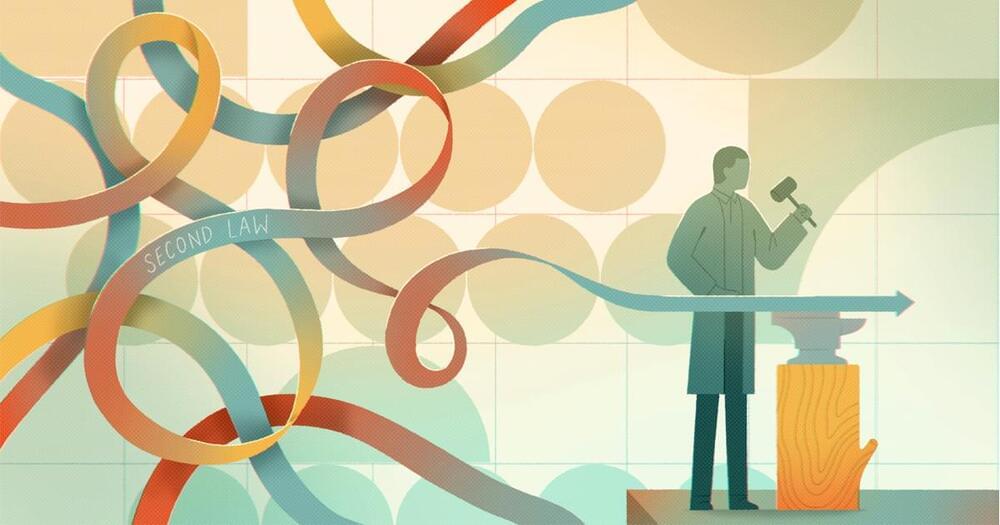Classical thermodynamics has only a handful of laws, of which the most fundamental are the first and second. The first says that energy is always conserved; the second law says that heat always flows from hot to cold. More commonly this is expressed in terms of entropy, which must increase overall in any process of change. Entropy is loosely equated with disorder, but the Austrian physicist Ludwig Boltzmann formulated it more rigorously as a quantity related to the total number of microstates a system has: how many equivalent ways its particles can be arranged.
The second law appears to show why change happens in the first place. At the level of individual particles, the classical laws of motion can be reversed in time. But the second law implies that change must happen in a way that increases entropy. This directionality is widely considered to impose an arrow of time. In this view, time seems to flow from past to future because the universe began — for reasons not fully understood or agreed on — in a low-entropy state and is heading toward one of ever higher entropy. The implication is that eventually heat will be spread completely uniformly and there will be no driving force for further change — a depressing prospect that scientists of the mid-19th century called the heat death of the universe.
Boltzmann’s microscopic description of entropy seems to explain this directionality. Many-particle systems that are more disordered and have higher entropy vastly outnumber ordered, lower-entropy states, so molecular interactions are much more likely to end up producing them. The second law seems then to be just about statistics: It’s a law of large numbers. In this view, there’s no fundamental reason why entropy can’t decrease — why, for example, all the air molecules in your room can’t congregate by chance in one corner. It’s just extremely unlikely.
